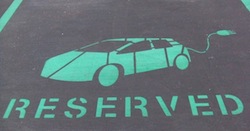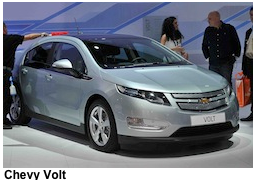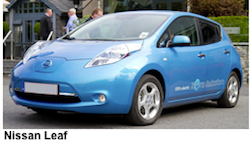Humming With Data: How the Cloud Enables Electric Car Adoption
Imagine if everyone in your suburban cul-de-sac decided to hug a polar bear (figuratively speaking) and bought an electric car like the Nissan Leaf or the Chevy Volt. Every night, they would arrive home from work anywhere between 5 – 7 p.m. and plug them in just when electricity demand peaks.
or the Chevy Volt. Every night, they would arrive home from work anywhere between 5 – 7 p.m. and plug them in just when electricity demand peaks.
What would happen?
There would probably be enough electricity in the entire system to deal with the demand, but that would not help local transmission issues. In other words: electric car blackout.
The Obama administration wants one million electric vehicles plying the nation’s roads by 2015, but we know little about how the owners of those cars will behave, Stanford University transportation researcher Lee Schipper told me earlier this year. Where do people go in their cars? How far do they usually drive? When will they charge them?
Schipper felt that more than a century of experience with internal combustion engine vehicles will be next to no help in answering these electric questions.
“I see electric vehicles as a different type of operating system than gasoline cars,” Schipper said. (A leading thinker in transportation and energy, Schipper died in August after a battle with cancer.)
To Schipper, the widespread adoption of electric vehicles presented a problem that must be solved with data – specifically, cloud-based software that will collect information on electric vehicles connected to the grid.
 We have only begun to see the beginnings of it. GM previewed its data-gathering ability in April, when the company revealed that Volt owners were driving 1,000 miles between visits to the pump.
We have only begun to see the beginnings of it. GM previewed its data-gathering ability in April, when the company revealed that Volt owners were driving 1,000 miles between visits to the pump.
That was just the appetizer. Soon, utility companies, car manufacturers and third party data providers will be getting fat on data and finding new ways to use it.
“The fascinating thing about the electrification of the car is it has tremendous value chain and ecosystem ramifications,” Tony Posawatz, the line director for the Volt, told me. “There are so many opportunities, whether its renewable energy whether its smart grid, whether it’s the basic utility functions of transmission distribution.”
GM’s OnStar telematics system, for example, is capable of much more than feeding information about how far the car goes between fill ups, Posawatz said.
OnStar knows whether people are plugged into standard 120-Volt wall outlets or dedicated 240-volt charging stations and it knows when a charge begins and ends. The Volt is likewise an intelligent system — it can schedule a charge to complete by a prescribed time, say 5 a.m., and could soon communicate with a utility company and stop charging if the grid is straining to meet demand.
(GM’s ability to collect GPS data on this kind of detailed information, even after the OnStar service is disconnected, has recently stirred controversy.)
Not only will the data have value, the ability to use the data to control when vehicles get charged and in what order will be increasingly important.
Companies such as General Electric, which sponsors this magazine, are also wading into the space with smart grid systems that can help utility companies manage their loads. The DR1000, a software system for utilities, could soon manage not only when cars are charged but offer discounts to customers who are willing to wait to be charged last.
 Eventually, the two-way communication between cars and the grid will lead to V2G (vehicle-to-grid) storage – where cars can charge during off-peak hours and reverse the flow of power back into the grid at the peak. Essentially, cars function as storage devices for the grid, which controls the flow of the electricity into the vehicles within certain parameters set by the vehicle owner. The University of Delaware and NRG Energy recently announced a partnership to develop the early stages of eV2g technology.
Eventually, the two-way communication between cars and the grid will lead to V2G (vehicle-to-grid) storage – where cars can charge during off-peak hours and reverse the flow of power back into the grid at the peak. Essentially, cars function as storage devices for the grid, which controls the flow of the electricity into the vehicles within certain parameters set by the vehicle owner. The University of Delaware and NRG Energy recently announced a partnership to develop the early stages of eV2g technology.
But they’re going to need a lot more data.
Reprinted with the permission of TXCHNOLOGIST, sponsored by GE.










